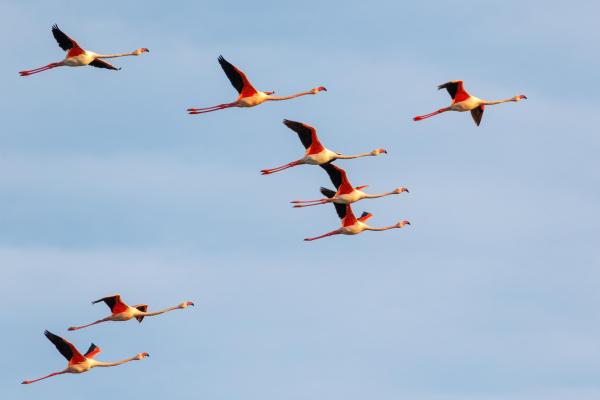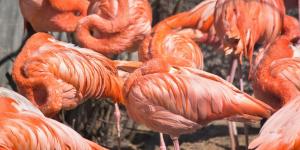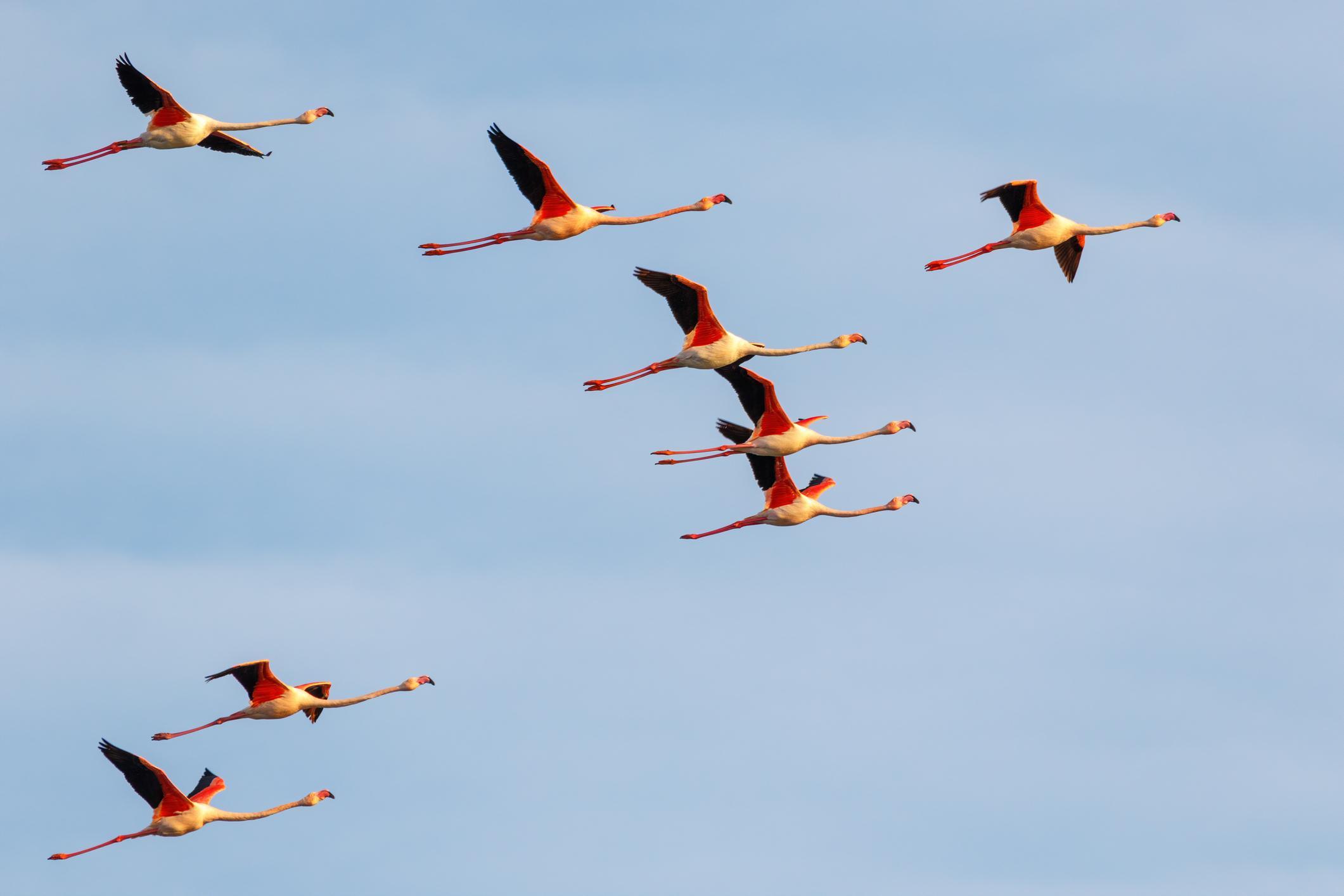Can Flamingos Fly? - The Flight of the Flamingo


The flamingo (Phoenicopterus) is one of the most beautiful and spectacular exotic birds in existence. Among its main features are the pink color of its plumage, its long legs and slender neck. They get their distinctive pink coloration from metabolizing carotenoids in small crustaceans that they eat. The ability to fly is one of the characteristics that distinguishes birds from others. Although most can fly, there are some that cannot, such as ostriches. Therefore, it is only natural to wonder if flamingos can fly.
The following AnimalWised article explains if flamingos can fly, as well as some of their key characteristics.
Can flamingos fly?
Flamingos or flamingos are a species of wading bird in the family Phoenicopteridae. There are six species of flamingos distributed in different regions: two in Eurasia and four in the Americas. Flamingos are medium to large birds that vary in size depending on the species. Flamingos can grow between 0.80 m and 1.6 m tall. The wingspan ranges from 1 to 1.70 m and the weight can range from 1.5 to just over 4 kg.
And to answer the question if flamingos can fly, the answer is yes. Though they are rather reluctant to fly compared to other birds, flamingos are actually great fliers, able to fly great distances and great heights. One might doubt the ability of flamingos to fly, for in captivity their wings are usually clipped to prevent them from flying. But a simple carelessness is enough for them to grow back and fly to freedom.
How high can flamingos fly?
Birds migrating over places in the South American Andes, such as the James's flamingo(Phoenicoparrus jamesi), have been observed with flamingos flying at altitudes of nearly 6000 meters.
The direction and strength of the wind, as well as the birds' destination, determine how high flamingos fly. For example, when flamingos fly over the ocean, they tend to fly lower than when they are over the ground.
Flamingos not only fly high, they fly fast. They can move at a speed of about 50 km per hour over short distances, but on long-distance flights with supporting winds they can fly up to 60 km per hour.
Continue reading this other article if you want to know more about birds that can not fly.
Why do flamingos fly?
Flamingos are generally non-migratory birds. However, due to changes in their environment, flamingo colonies do not always last. There are many reasons why flamingos may migrate, but mainly it is changes in water level or temperature. We explain this in more detail below:
- Changes in water level: Water is vital to flamingos because it is their food source. Therefore, any change in water level can be a good reason to look for more favorable places. Too high a water level affects their breeding areas, and drought reduces their food supply.
- Temperature fluctuations: When temperatures drop, flamingos migrate to warmer climates to find shelter and food. In addition, flamingos that breed in temperate areas migrate to warmer climes outside the breeding season. However, with global warming, many of their migration patterns have changed, making their journeys shorter and shorter.
However, flamingos can also fly in search of fresh water when they feed in highly saline water. This is because they need to compensate for the excess salt they have ingested by feeding in salty water. Usually, freshwater sources are located near the feeding site.
As long as habitat conditions are adequate in all respects, flamingos stay in one area and only briefly shuttle back and forth between feeding, courtship, mating, and egg-laying, as these processes all occur nearby but separately.
Do flamingos fly at night?
When flamingos migrate, they do so mainly at night to avoid predators. However, that does not mean they can not be out and about during the day. If the sky is cloudless and there is a favorable tailwind, flamingos may also fly during the day. When they do, they often fly at high altitudes to avoid predators such as eagles.
Continue reading this other article if you want to know more about other animals that migrate and why they do it.
How do flamingos fly?
When flamingos fly, they stretch out their legs and necks, often with their beaks tilted upward. Also, during flight, they beat their wings incessantly to take advantage of prevailing winds and conserve energy. Since flamingos cannot glide, they never stop moving their wings when they are in the air.
The way flamingos fly is sometimes compared to geese, as they also fly in flocks that can include thousands of individuals. To conserve energy, flamingos usually fly in rows or "V" formations since they expel air backward with each wing beat, lifting following birds with it. These flocks are also very loud, which helps them stick together.
Individual flamingos are rarely seen, unless they are stray or sick birds that remain in isolated locations for extended periods of time. Despite being territorial about their feeding grounds, flamingos are among the most social birds and stay relatively close to one another, even when nesting.
Flamingos also run before they begin to fly before taking off. They can do this either on land or in water, as they usually stay at shallow depths. When exposed to strong winds, they can take off with a single flap of their wings.
In general, flamingos are reluctant to fly. If an intruder approaches, they will most likely walk away unless they perceive a serious threat. They always perch on the ground in shallow waters, on the shores of lagoons, beaches, estuaries, ponds, and marshes. They never sit in trees.
Do not miss this other article where we talk about prehistoric birds and how birds evolved into what they are today.

If you want to read similar articles to Can Flamingos Fly? - The Flight of the Flamingo, we recommend you visit our Facts about the animal kingdom category.
- ITIS (2022). Phoenicopteridae . Available at: https://www.itis.gov/servlet/SingleRpt/SingleRpt?search_topic=TSN&search_value=174974#null
- Ooms, N. (2022). Phoenicopteridae . Animal Diversity Web. Available at: https://animaldiversity.org/accounts/Phoenicopteridae/






